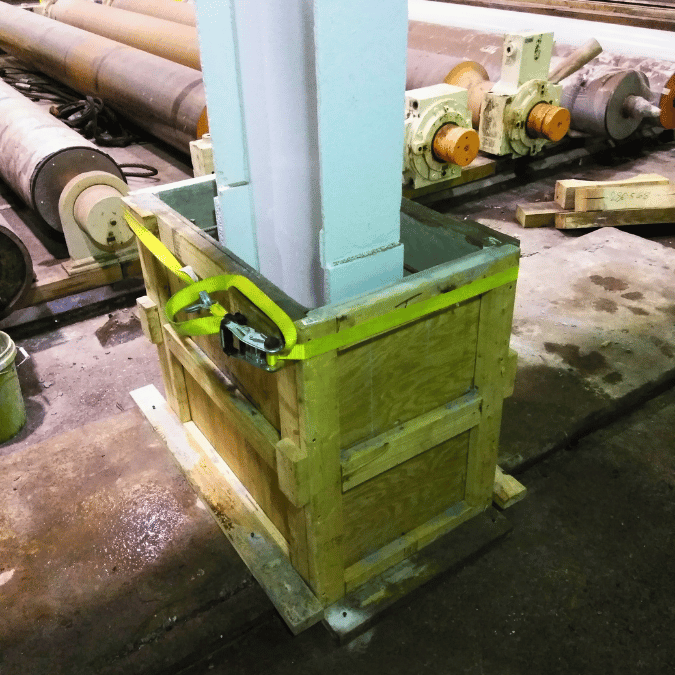Understanding Wall & Column Formwork:
Wall and column formwork are temporary structures used to support freshly poured concrete until it reaches the required strength. These formwork systems consist of panels, braces, ties, and other accessories designed to withstand the pressure exerted by wet concrete and maintain the desired shape of the structure. The primary goal of wall and column formwork is to achieve accurate dimensions, smooth finishes, and structural integrity in the final concrete elements.
Types of Wall & Column Formwork
Traditional Formwork: Traditional formwork involves constructing temporary molds using timber, plywood, or steel components. This method allows for flexibility in shaping various wall and column configurations but may require more labor and time for assembly and dismantling.
Modular Formwork Systems: Modular formwork systems, such as aluminum or steel panels, offer pre-engineered components that can be easily assembled and adjusted to specific project requirements. These systems provide efficiency, repeatability, and cost-effectiveness, making them popular choices for large-scale construction projects.
Key Components of Wall & Column Formwork
• Panels: Formwork panels serve as the primary surface for containing the concrete and shaping the desired structure. These panels may be made of timber, plywood, steel, or aluminum, depending on the project's requirements and budget constraints.
• Braces and Props: Braces and props are used to support the formwork panels and maintain their position during concrete pouring and curing. These components provide stability and prevent deformation or collapse of the formwork system under the weight of the concrete.
• Ties and Fasteners: Ties and fasteners are used to connect formwork panels together and secure them to the structure. These components ensure proper alignment and prevent leakage of concrete during the pouring process.
• Formwork Accessories: Various accessories, such as formwork release agents, chamfer strips, and form liners, may be used to enhance the appearance and functionality of the concrete elements. These accessories help achieve smooth finishes, sharp edges, and decorative patterns in the final structure.
Techniques for Successful Wall & Column Formwork
- Proper Planning and Design: Effective wall and column formwork begins with thorough planning and design. Consider factors such as load requirements, concrete mix design, formwork material selection, and construction sequence to optimize the formwork system for the specific project conditions.
-
- Precise Installation: Accurate installation of formwork components is critical to achieving the desired dimensions and finish of the concrete elements. Ensure that formwork panels are properly aligned, braced, and supported to withstand the pressure exerted by the concrete.
-
- Adequate Reinforcement: Reinforcing bars (rebar) or mesh may be required to reinforce concrete walls and columns and enhance their structural strength. Install reinforcement according to the project specifications and design requirements, ensuring proper placement and spacing within the formwork.
-
- Timely Concrete Pouring: Coordinate concrete pouring schedules to minimize delays and ensure continuous workflow. Monitor concrete placement to prevent segregation or honeycombing and maintain consistency in the mix throughout the pouring process.
-
- Controlled Curing: Proper curing is essential for achieving optimal strength and durability in concrete walls and columns. Implement appropriate curing methods, such as moist curing or curing compounds, to prevent premature drying and cracking of the concrete.
Tips for Optimal Performance
Regular Maintenance: Inspect formwork components regularly for signs of wear, damage, or deterioration. Replace worn-out or damaged parts promptly to ensure the safety and integrity of the formwork system.
Safety Precautions: Prioritize safety measures to protect workers from potential hazards associated with formwork installation and concrete pouring. Provide adequate training, personal protective equipment (PPE), and fall protection systems to mitigate risks and prevent accidents on the construction site.
Quality Control: Implement quality control measures to monitor the integrity and performance of the formwork system throughout the construction process. Conduct periodic inspections, concrete tests, and structural evaluations to verify compliance with project specifications and industry standards.
Conclusion
Wall and column formwork are indispensable elements in construction projects, providing the framework for creating durable and aesthetically pleasing concrete structures. By understanding the fundamentals of formwork design, installation, and maintenance, construction professionals can ensure the success of their projects while prioritizing safety, efficiency, and quality. With proper planning, precise execution, and adherence to best practices, mastering wall and column formwork is key to achieving excellence in construction.

